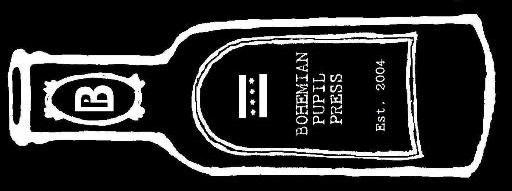HOME | BROADSHEETS | ARCHIVE | ITINERARIES | MIXTAPE | EVENTS | FAQ | RSS | LINKS
Advertise | Newsletter | About/Subscribe | Art Walk | Books
|
**PRINT: COLD WAS THE GROUND, by Chicago's Scott Stealey, is No. 34 in our broadsheet series. Gina, protagonist, a rather lonely condo dweller/office manager, strikes up a fleeting friendship with one Porgo, an Eastern European construction worker who is burying on her property what Gina takes for a time capsule. But the metaphorical fix is in -- Porgo, an ESL student, may be leading Gina in directions she canít exactly get her head all the way around. Enjoy. Chicago writer Stealey is editor of the Please Donít online mag. **WEB: ASYMPTOTES Michael Balatico
|
ASYMPTOTES
For Heather
---
Michael Balatico
Balatico lives and writes in Chicago.
Let two strangers on a southbound train, say a man and a woman and their respective knowledges, serve as functions defining an expression equivalent to story. Allow for the expression's constants: his seat on the right side of the train's direction facing east, hers on the left side facing west. Now let the curve of her function be described by A, his by B.
A) Sunset: If she knows, then he does not. She knows that in a certain shade of detachment sunset is indistinguishable from sunrise. Time defined by the sky's color, she reasons, unfolds as a matter of progression. Sunrise: black to blue to purple, red to yellow to daytime. Sunset: yellow to red to purple, blue to black to nighttime. The fiery expression of the sun caresses the corners of her eyes, and makes her sadness smile. She watches the sun go out behind his shoulder and wishes she knew how to share.
B) Near her, the mother cradling a baby: If he knows, then she does not. He knows he fears mother and baby seated near her. He knows he fears the mutable expression in which mother and baby participate. A structure now simple, he reasons, but already in the process of bending and stretching to accommodate their narrative's growth. He watches mother rub noses with baby and feels melancholy bead his forehead and brow. He shivers. He watches mother kiss baby's head and hopes she, seated nearby, does not catch him blink.
Now plot A and B on the same set of axes and notice loneliness. Thus, understand that distance between the curves, space so small it cannot be seen, is nevertheless distance. Yet, as we attempt a conclusion, we ponder distance and ask, What would happen if we altered A and B so that trajectories of two strangers' gazes shifted just slightly so pairs of eyes might intersect? Could blue eyes and black eyes bridge the swaying aisle between them and impart knowledge? Are we asking too much of these functions? Though we define interaction's arc as a series of coordinate misunderstandings, we want them to meet anyway.
**SUBSCRIBE TO THE2NDHAND if you like reading our our respective broadsheet and online series -- any donation above $30 gets you a LIFETIME SUBSCRIPTION to THE2NDHAND's quarterly broadsheet. See this page or send a payment through PayPal here: **BOOKS BY THE2NDHAND CONTRIBUTORS at Amazon
071210

